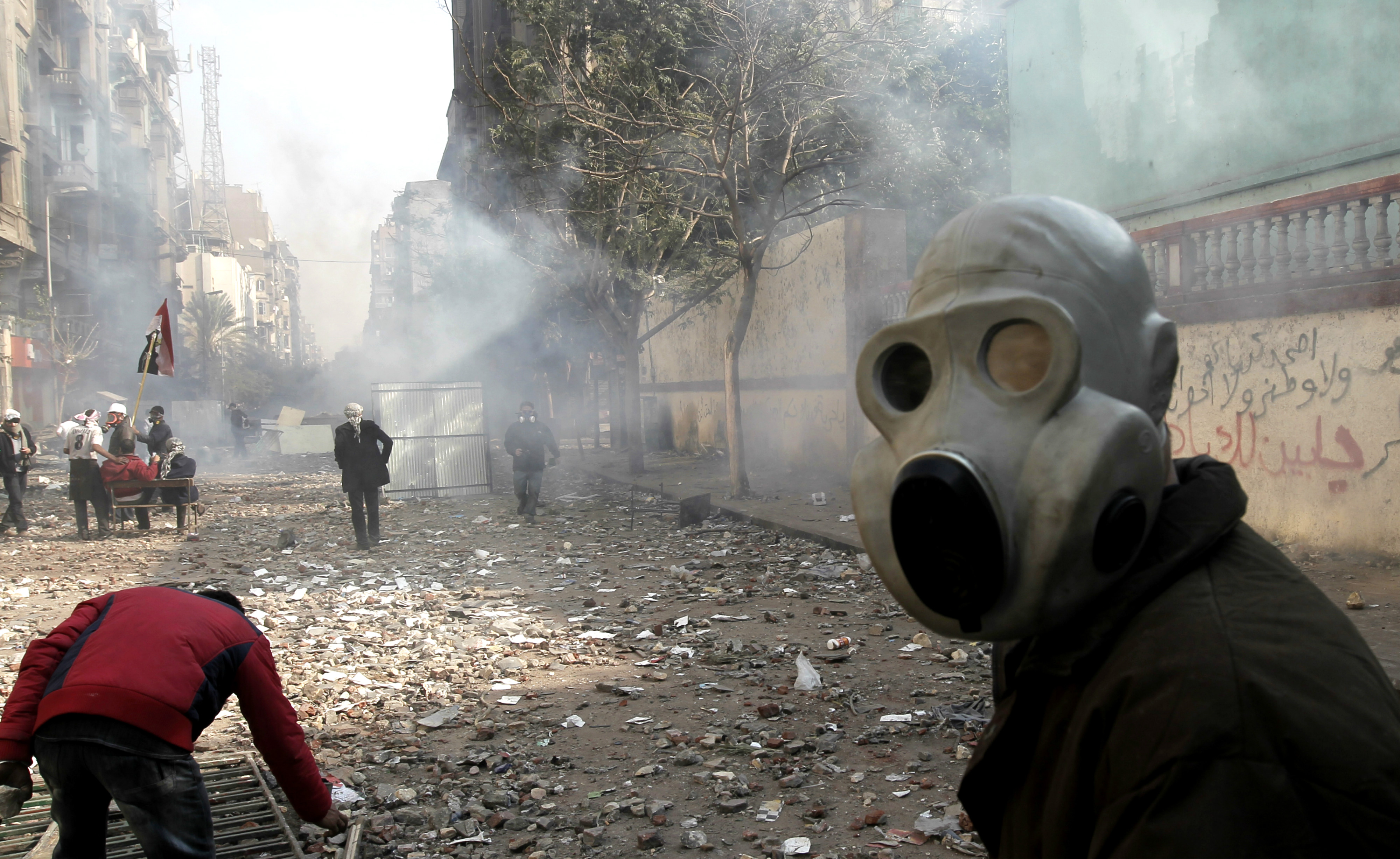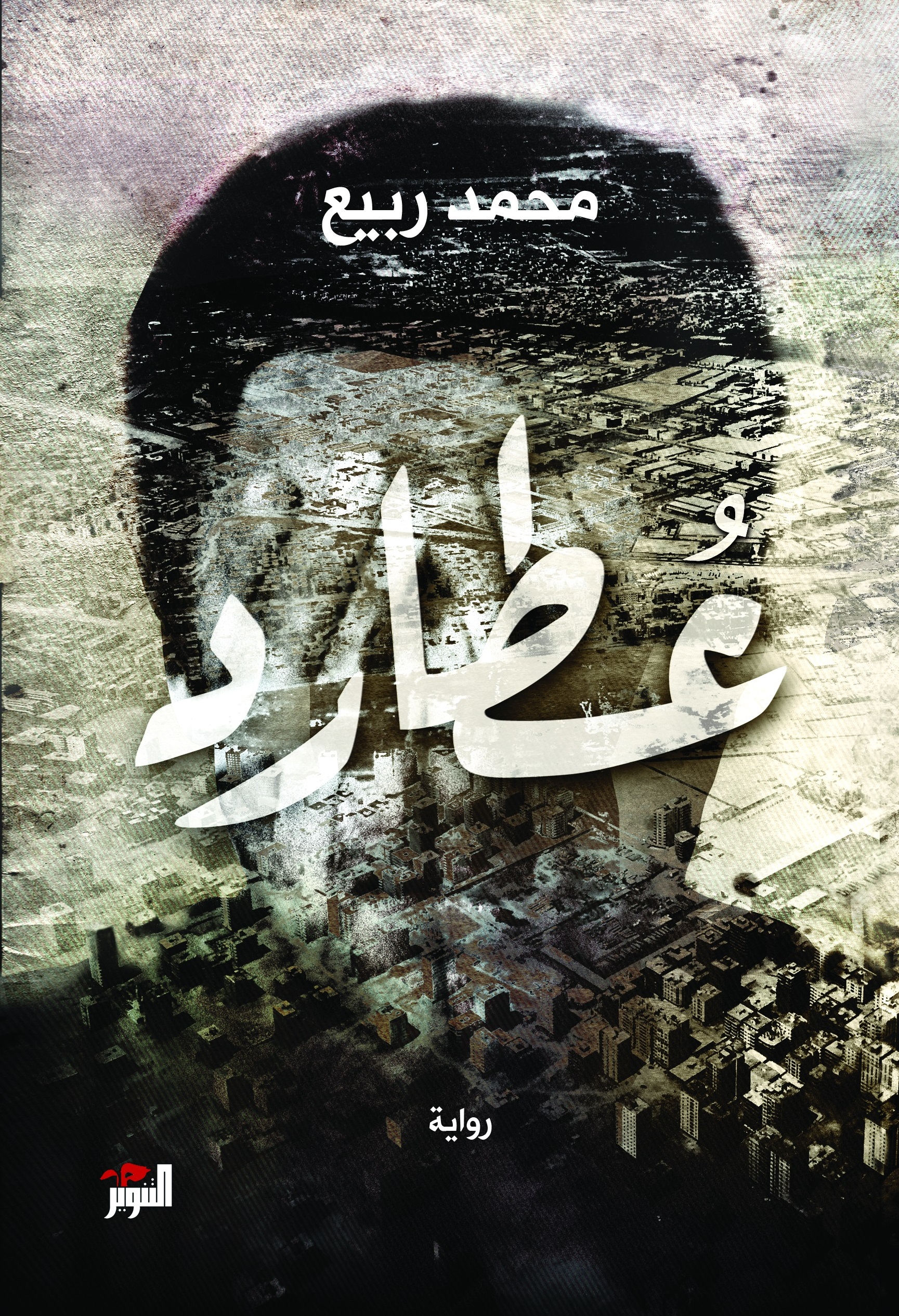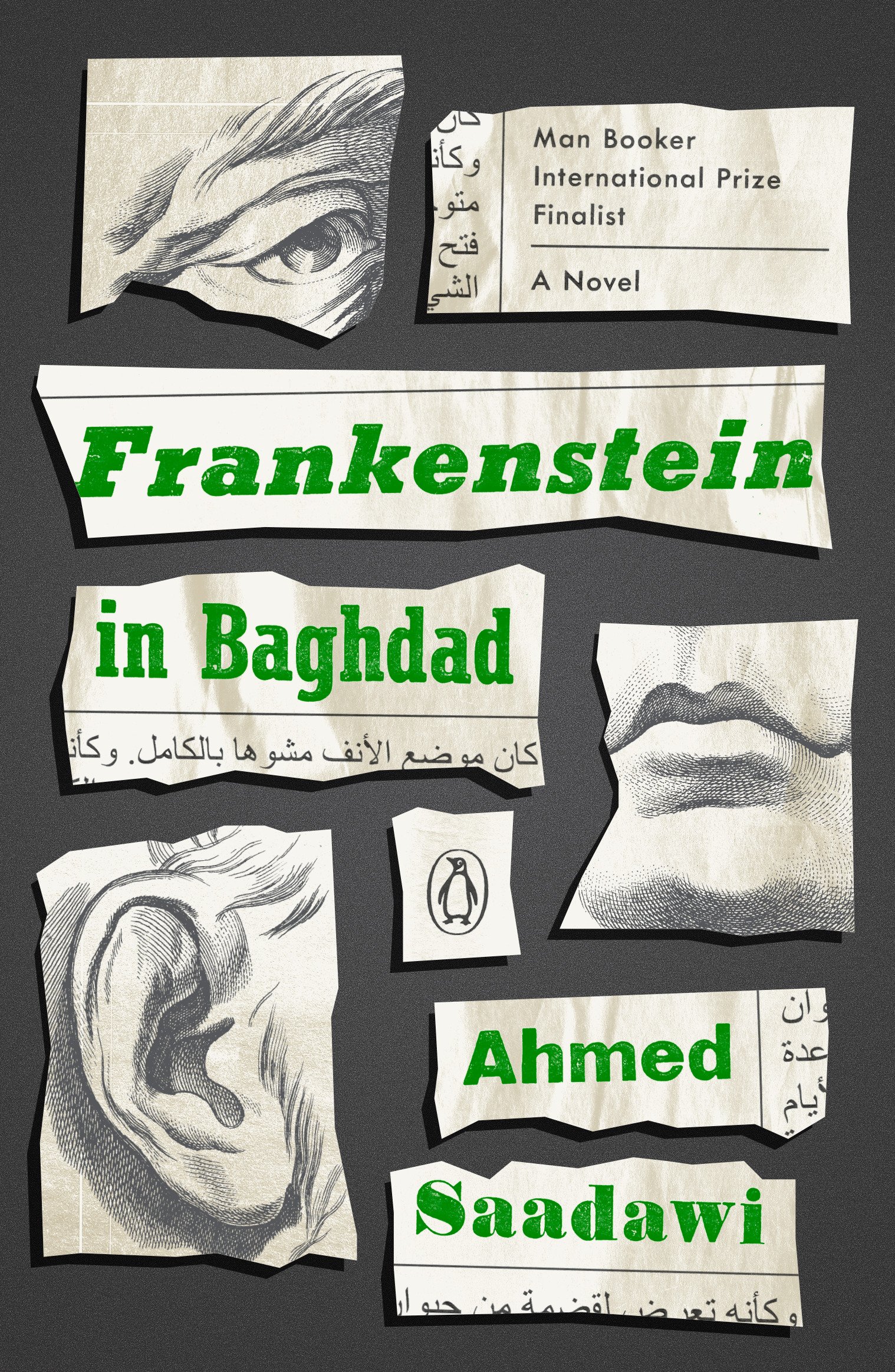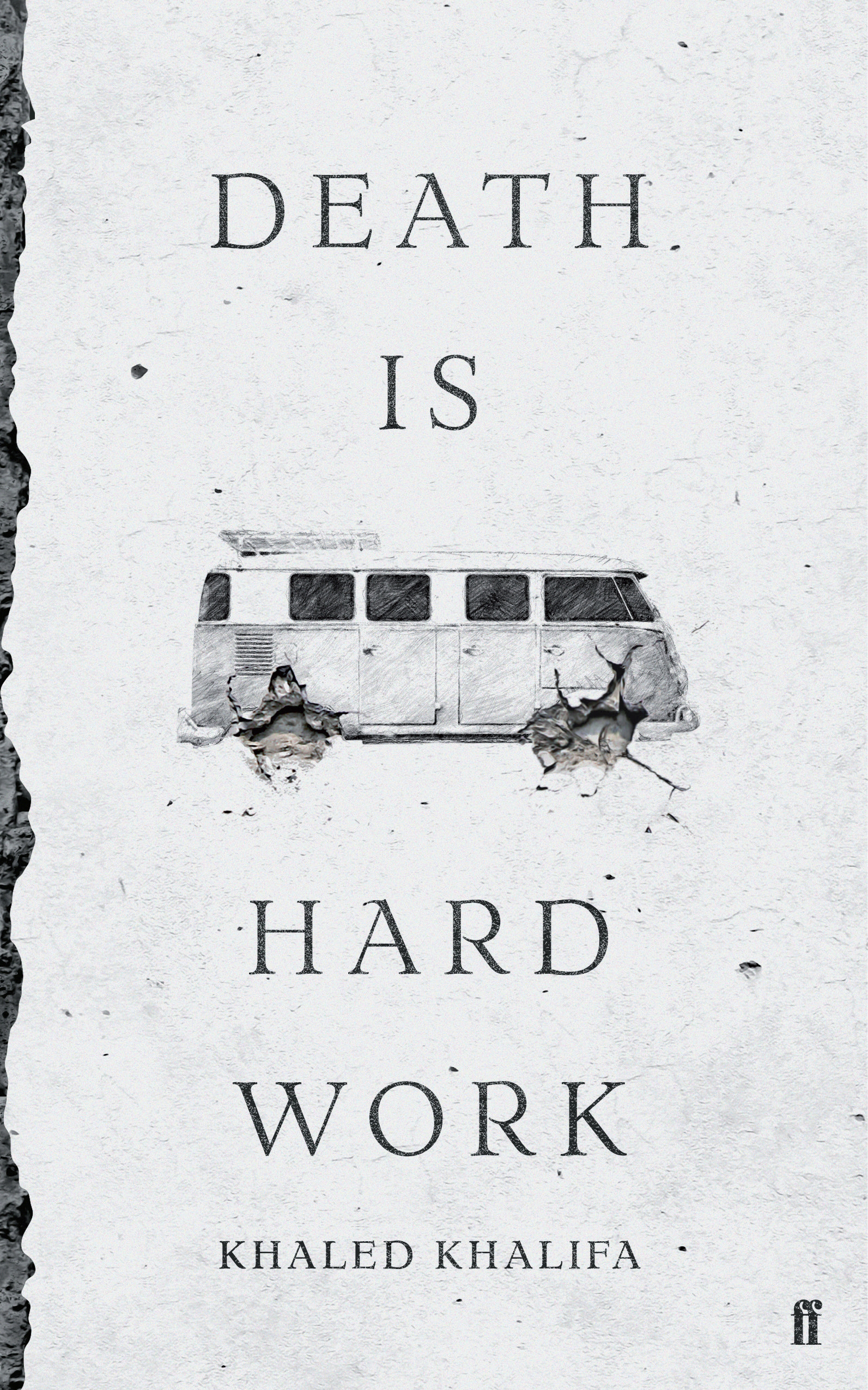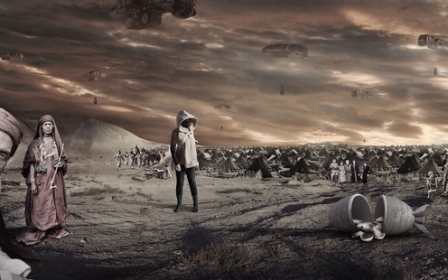Apocalypse now: Why Arab authors are really writing about the end of the world
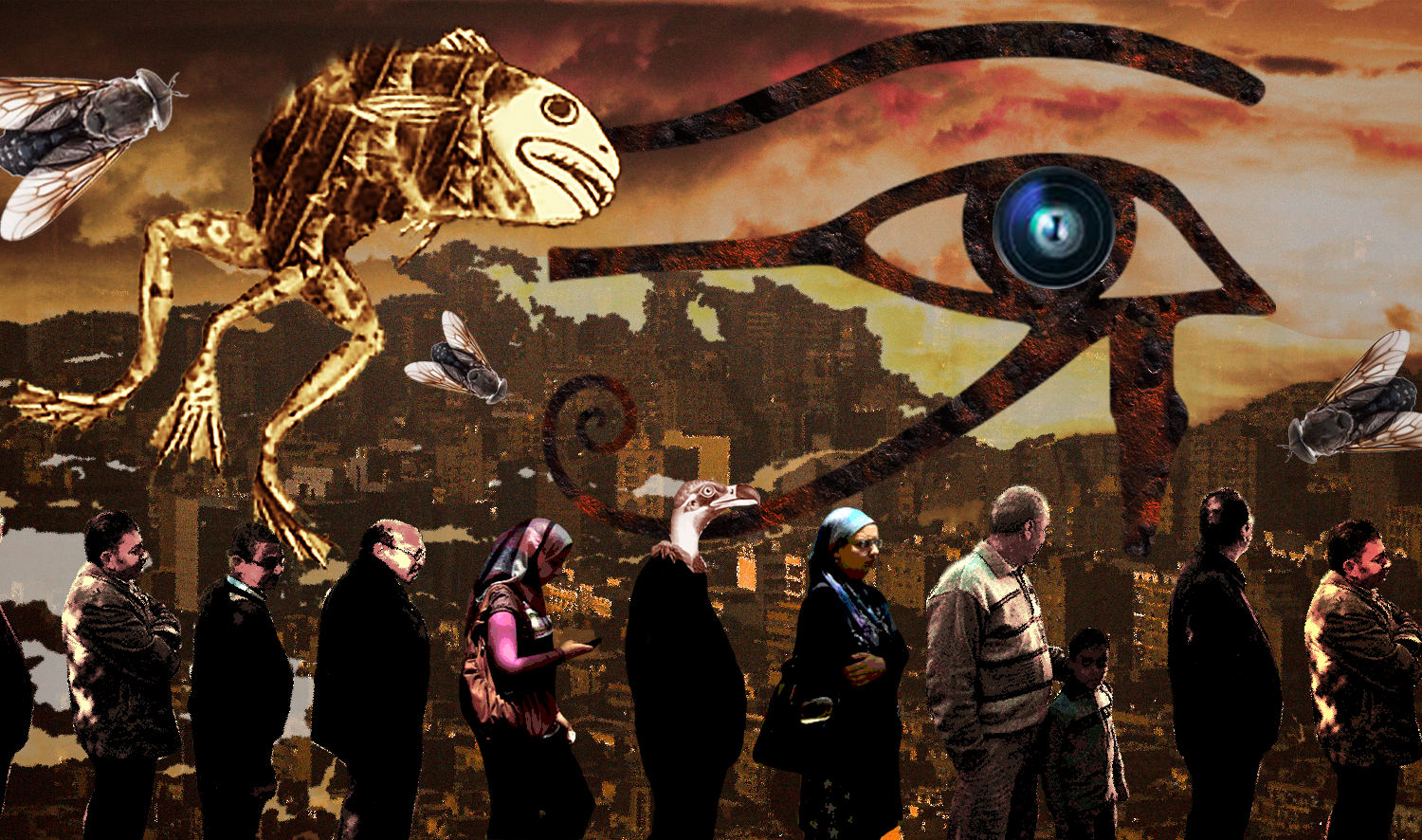
A city built in accordance with an architectural conspiracy, designed to bring about the apocalypse.
Surveillance cameras rigged to shoot at any sign of wrongdoing.
A state, run by a bureaucracy so ruthless that dying patients must wait in line for official permission to be seen by a doctor.
A group of female crime bosses waging war on each other above and below ground through a network of tunnels and sewers.
A mysterious disease that seals the face up into a lump of flesh, leaving only two nasal holes through which to breathe.
New MEE newsletter: Jerusalem Dispatch
Sign up to get the latest insights and analysis on Israel-Palestine, alongside Turkey Unpacked and other MEE newsletters
A monstrous creature stitched together from the parts of bodies torn asunder by car bombs, now animated by a vengeance to kill those responsible for its own death(s).
These worlds, imagined in various books* published in Arabic (and relatively soon thereafter translated into English) during the last several years, give a general impression of how some Arab novelists are processing the current state in which they live: by exploring the abyss of a possible future, looming darkly through the fissures of the present.
The general narrative has it that Arab writers, disillusioned by the failures of the Arab Spring and the renewed plunge into disorder and authoritarianism, have spawned a new literary movement of late, turning to speculative fiction - dystopian in particular - to make sense of the nightmarish present.
The Anglophone media has embraced these books, as well as this narrative: that they have all been born out of a post-revolutionary landscape and, although they deal with futuristic societies, use metaphorical approaches to speak about the current dystopia of the "Arab world".
Different fruits, same soil
But that would be to simplify a complex moment and movement, as well as to discount the vastly different political landscapes from which these books have emerged.
The Arab world covers an enormous territory. This movement of dystopian fiction is largely an Egyptian phenomenon, although the two genre entries that have actually won the International Prize for Arabic Fiction (more commonly known as “the Arabic Booker”) hail from Iraq (Ahmed Saadawi’s Frankenstein in Baghdad, winner in 2014 and published in English in 2016) and Palestine by way of Jordan (Ibrahim Nasrallah’s The Second War of the Dog, which won in 2018 and has yet to be translated into English).
Zeina G. Halabi, assistant professor of Arabic Literature at the American University of Beirut, says that even when it comes to Egypt, “it would be inaccurate to attribute all this writing to ‘the revolution,’ as though it were some sort of Big Bang before which none of this existed.”
Among other things, Halabi is interested in how social and political movements influence literary ones and vice versa. But she is quick to point out that the current spate of dystopian fiction coming out of Egypt can, in part, trace its roots as far back as a century, to a time when Arab writers such as Jurji Zeidan and Hafez Mahmoud were trying to imagine what a perfect, utopian society might look like.
Nael el-Toukhy, a translator and novelist, agrees. One of his own novels, Women of Karantina, is often grouped together with works by fellow Egyptians, including Ahmed Naji’s Using Life and Mohammad Rabie’s Otared.
All three are used as evidence for this new generation of younger Egyptian writers turning to dystopia to air their frustrations with present-day Egypt.
But of the three, only Otared has the relentlessly grim quality usually associated with the genre, with Rabie’s future Cairo a divided city, its eastern half presided over by a tyrannical group called the Knights of Malta. Much of the novel is narrated by the titular Ahmed Otared, a policeman who spends his time methodically murdering people from a sniper’s tower, describing their death throes in agonising detail.
Using Life, by contrast, is light and bubbly in tone - even if it does end in a successful apocalypse. Sex, drugs and rock’ n’ roll abound as the narrator uncovers the Society of Urbanists and their conspiracy to level the stinking, teeming city of Cairo so that it can be rebuilt from scratch. The book landed Naji in prison for nine months, not because the authorities objected to his speculation about a possible conspiracy from on high, but because a private citizen lodged a complaint against the explicit sexual content of the novel.
Meanwhile, el-Toukhy’s Women of Karantina is a maniacal picaresque with the scope of an epic. It begins with two lovers, Ali and Inji who, on the run after “accidentally” committing a murder in Cairo, settle down in Alexandria and proceed to beget and enlist an entire criminal empire.
But el-Toukhy is uncomfortable with his work being classified as dystopian. "I have two problems with this," he says. "First, it is something that Western critics do, because all they have to go on are the novels in Arabic that have been translated into English, and they know nothing about Arabic literature except that which has been translated into European languages.
"Second, because they always connect the revolution to dystopia, as though searching for evidence of the revolution's effect on new Egyptian literature, they found what they were looking for in this word 'dystopia': young Egyptian writers are writing dystopia because they're disillusioned by the results of the Arab Spring."
Women of Karantina, el-Toukhy says, “was 90 percent complete by the time the Arab Spring came about, and so it has nothing to do with the revolution, and even less to do with its disappointments.”
Instead, the authory posits a more interesting and more nuanced assertion: that what these books have in common, rather than their "dystopian" imaginings, is that they all arise from having “shed the fear of addressing politics or political events through literature,” marking what he says is a significant departure from the 1990s, when writers either ignored politics in their work or else wrote ideological tomes.
Regarded as such, this new spate of Arab literature and the revolution have their origins in the same place, with both emerging out of the same conditions. They are not cause and effect, but different fruits of the same soil.
What he does see in common with Naji’s, Rabie’s and his own novel is this “ability to deal with politics without succumbing to ‘ideological writing'."
The same frustrations that culminated in the fearless act of taking to the streets to demand a better life and a better society are those that also motivated writers to begin speaking out on the page; to imagine alternate worlds or futures that, for all their nightmarish qualities, represent the bold impulse to let one’s imagination run onwards as wildly, manically and savagely as possible.
Lost in translation
It might be going too far to say that because Egypt roused itself to the possibility of a better future, it has produced a body of literature concerned with engaging with the future as an imaginative space, with narrating alternate “future histories”, a phrase el-Toukhy uses to describe his own novel.
But it is interesting to consider this idea alongside Ahmed Saadawi’s Frankenstein in Baghdad, which not only won the Arabic Booker but was also shortlisted, in its English translation, for the 2018 Man Booker International Prize.
Part crime thriller, part sci-fi horror, the book fuses numerous narratives to tell the story of a monstrous creature inadvertently created, initially as an act of mercy, by a junk dealer who stitches together pieces of various corpses to give a widow - whose husband was ripped apart by a car bomb - a full body to bury. The resultant creature disappears before any burial can take place: soon there is a spate of murders across Baghdad, with many witnesses describing a hulking giant - alternately referred to as “Frankenstein,” “Criminal X,” or most often, “Whatsitsname” - fleeing the crime scenes.
But Frankenstein in Baghdad isn’t dystopian or future history: its events take place in 2005, after the American invasion of Iraq. As a metaphor, the creature is an apt representation of a country rent asunder by violence and unable to cleanly identify who is guilty and who is innocent.
It’s also interesting to consider that there have so far been no entries from Syria in the dystopian or speculative fiction genre. That said, if we reduce the contents of some books to a blurb - such as Khaled Khalifa’s Death is Hard Work, where a group of siblings drive a microbus across a blasted landscape, transporting their father’s corpse for burial as it decays and putrefies in the back – then we would be hard-pressed to consider them as anything but.
This is probably because, as Halabi says, “people are too busy documenting the horrors of the actual reality they’re still experiencing".
One might be forgiven for thinking, given the attention that these books have received in the English-language press, that they form a movement, a vast tide of new releases marking a shift in Arabic literature.
But in reality, says Marcia Lynx Qualey - writer, editor, and the mastermind behind Arab Lit, the seminal website on all things Arabic-literature-in-
Part of this is because genre books, says Qualey, “are much more sellable than a historical novel about 1950s Algeria and France, or Cairo in 1973, or Palestinian volunteers in the Spanish Civil War.”
But beyond that, she says, there are important questions to be asked about what is being translated - and why. “I think Anglophone publishing is actively looking for these sorts of works and is also actively creating them, through commissioning anthologies such as Baghdad Noir, Iraq + 100, Palestine + 100, etc.”
Ghenwa Hayek, associate professor of Modern Arabic Literature at the University of Chicago, who teaches Arabic literature both in its original Arabic and in English translation, voices a darker answer about where this interest might come from. “It’s not far-fetched to think,” she says, “that part of the fascination [in the English-speaking world] for this dystopian fiction is due to the fact that it somehow fulfils people’s expectations of what they think the Arab world is like: a place of chaos, authoritarianism, and violence.”
El-Toukhy, himself a translator, expresses similar concerns, albeit about the way these books are being interpreted as “a trend,” in the Anglophone press. “The English-language critic, wishing to convince himself that he’s read more than a book or two from the Arab world, is happy to imagine that he has in fact read an ‘entire new trend’ in Egyptian literature,” he says, with characteristic black humour.
Certainly, it is imperative to keep such questions in mind when reading translated literature: the politics of translation are never not, well, political.
But if this enthusiasm for genre fiction serves as a gateway drug, bringing readers to literature translated from Arabic and then enticing them to stick around for more; to read other books by Nael El-Toukhy, Mohammad Rabie, or Ahmed Saadawi; and from them to then branch off into other writers, other genres, through which to get a bigger, more complex, more multitudinous view of the Arabic-speaking world - then no one is complaining.
To encounter a place through its literature: in a world beset by dystopias, it is the best sort of utopia that one could hope for.
* These snippets, are, in order, taken from:
- Using Life by Ahmed Naji (published in Arabic in 2014, in English translation, by Ben Koerber, in 2017)
- The Second War of the Dog by Ibrahim Nasrallah (published in Arabic in 2016; certainly forthcoming in English as part of the IPAF prize, which provides a subsidy for translation)
- The Queue by Basma Abdel Aziz (published in Arabic in 2013; in English translation, by Elizabeth Jaquette, in 2016)
- Women of Karantina by Nael El-Toukhy (published in Arabic in 2013; in English translation, by Robin Moger, in 2015)
- Otared by Mohammad Rabie (published in Arabic in 2015; in English translation, by Robin Moger, in 2016);
- Frankenstein in Baghdad by Ahmed Saadawi (published in Arabic in 2013; in English translation, by Jonathan Wright in 2018)
Middle East Eye delivers independent and unrivalled coverage and analysis of the Middle East, North Africa and beyond. To learn more about republishing this content and the associated fees, please fill out this form. More about MEE can be found here.


